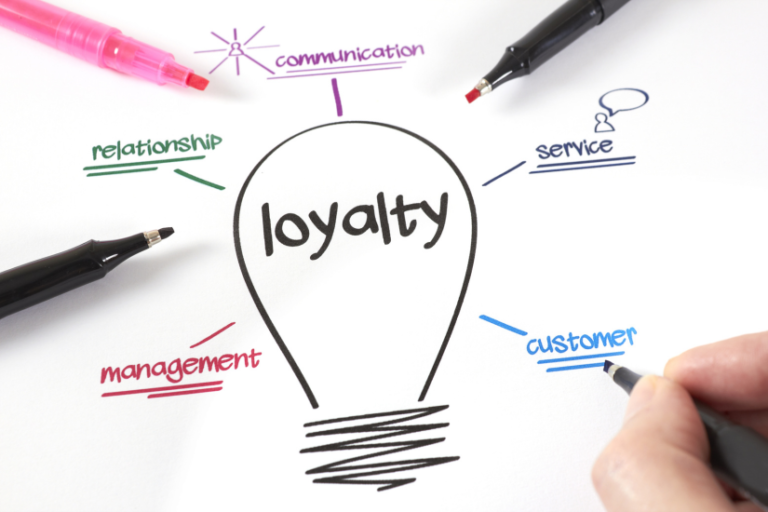
Introduction: Customer service is crucial to any successful business in today’s fast-paced world. However, providing excellent customer service can take time and effort. In a competitive business environment, finding ways to save time and reduce costs while maintaining high customer satisfaction is imperative. Fortunately, with technological advancements, there are ways to automate customer service, providing businesses with a more efficient and cost-effective solution. This blog post will look into the advantages of automating customer service processes and guide you on implementing effective automation strategies.
What is Customer Service Automation?
Customer service automation uses technology to automate customer service processes, such as answering frequently asked questions, sending automated responses, and routing customer requests to the appropriate department or team. Customer service automation aims to streamline processes and reduce response times, ultimately increasing customer satisfaction.
Numerous automation methods empower businesses to streamline their processes effectively – Here are a few examples:
1. Chatbots
Chatbots represent a form of artificial intelligence (AI) application designed to engage in human-like conversations with users. Chatbots can be programmed to answer customer FAQs, provide product recommendations, and even process orders. Businesses can reduce staffing costs using chatbots while delivering a 24-7 round-the-clock customer service response. Chatbots can handle a large number of requests and can quickly respond to customers’ inquiries with a high degree of accuracy.
**Benefits of Using Chatbots:**
– Improved Efficiency: Chatbots can handle multiple customer queries simultaneously, providing instant responses without delays.
– Cost-Effective: Automating chatbot responses reduces the need for human agents, leading to significant cost savings.
– Enhanced Customer Experience: Chatbots offer personalized interactions, tailoring responses based on customer data.
2. Automated Responses
Automated responses acknowledge a customer’s request and provide an estimated wait time for a reply. It can help manage customer expectations and reduce frustration. An excellent example of this type of automated response is when an online store sends an order confirmation email, giving details of the expected delivery date and providing a link for a customer to track the order status.
**Benefits of Using Automated Responses:**
– Faster and Instant Responses: Automated responses can be sent immediately, ensuring customers receive a prompt acknowledgment.
– Reduced Waiting Times: Providing estimated wait times reduces customer anxiety and sets realistic expectations.
– Improved Customer Satisfaction: Quick responses lead to higher customer satisfaction levels.
3. Routing Customer Requests
Automated routing of customer requests can ensure that the request is sent to the appropriate department or team, reducing the need for manual routing and ultimately saving time. By using automated routing, businesses can reduce response times and direct queries to the relevant department. For example, an IT support request is assigned and routed to the IT department, and the billing team processes billing inquiries.
**Benefits of Using Automated Routing:**
– Improved Response Times: Queries are routed to the correct department quickly, leading to faster resolutions.
– Better Accountability and Tracking: Automated routing ensures queries are appropriately assigned and tracked for effective management.
– Increased Customer Satisfaction: Swift resolutions contribute to higher customer satisfaction levels.
Benefits of Customer Service Automation

1. Reduced Response Times
Automating customer service processes means that responses can be sent almost instantly, reducing customers’ waiting time for an answer. One of the most critical factors in customer satisfaction is response time. The time it takes for a customer service team to respond can significantly impact the customer’s overall experience. For example, businesses can dramatically reduce response times by automating tasks and using chatbots, improving customer satisfaction.
2. Increased Efficiency
Automation allows businesses to streamline customer service processes by eliminating repetitive tasks and letting agents focus on more critical studies. It can result in increased efficiency and productivity within the customer service team. For example, automating routine tasks like resetting passwords, updating contact details, or processing refunds allows agents to focus on more complex tasks, such as resolving issues that require a human touch. By automating repetitive tasks, businesses can reduce the total number of hours spent dealing with customer requests while maintaining high customer satisfaction levels.
3. Cost-Effective Solution
By automating customer service processes, businesses can reduce the number of human agents needed to handle requests, ultimately saving money on labor costs. Additionally, automated responses can be sent 24/7, reducing the need for 24-hour customer service coverage. As businesses try to grow and remain competitive, they must reduce costs. Automation helps reduce staffing costs and allows companies to reduce time to resolve customer queries.
Improving Customer Experience
Automation technologies allow businesses to build customer loyalty by creating better and more efficient customer experiences. Here are some of how companies can use automation to enhance the customer experience:
1. Personalization
Businesses can use data to personalize and tailor their interactions with customers. Companies can deliver customized offers, messages, and services based on a customer’s transaction history, interests, and purchase history. Personalized interactions make customers feel valued and understood, fostering stronger relationships with the brand.
2. Self-Service Options
With the rise of self-service, customers now expect businesses to offer self-service options to complete tasks like account management, request processing, bill payment, and more. Providing these options saves businesses time and gives customers a better experience since requests are processed instantly, and customers can access information on their terms. Self-service options empower customers, giving them control over their interactions with the brand.
3. Multichannel Service Delivery
Customers expect to be able to get service through various channels, for example, email, phone, or live chat. An incoming email related to a customer’s order can be routed to the appropriate department through automated routing, and the customer can then receive an automatic response acknowledging the request. Offering multichannel service delivery ensures customers can reach out through their preferred communication method, making it convenient for them to engage with the brand.
Automating Customer Service

Processes
Selecting and implementing automation technologies should be determined through careful evaluation of the stakeholders’ needs and projected return on investment. Here is a list of steps that businesses can follow to automate their customer service effectively:
1. Assess Your Needs
Start by identifying specific areas where automation can help your business. Identify repetitive tasks and tasks where customers often seek assistance, then assess how automation can streamline these tasks for both staff and customers. Analyze customer feedback and past interactions to understand pain points and areas for improvement.
2. Select the Right Technology
Several automation technologies are available, from chatbots to automated routing systems to self-help portals. Identify the best technology for your specific needs, and work with that technology provider or vendor to ensure the technology is implemented correctly. When selecting the technology, consider various factors, including seamless integration with current systems, user-friendliness, scalability, and reliable customer support.
3. Build a Strategy for Implementation
Create a strategy for implementing the technology, and ensure all departments and stakeholders are on board. Proper implementation should include providing staff and customers with training and support so that everyone is on the same page and can understand and leverage the technology. Consider conducting pilot tests to evaluate the effectiveness of the technology before full deployment.
4. Test, Evaluate, and Refine
After the implementation, test and evaluate the effectiveness of the automation technology regularly. Solicit feedback from both staff and customers to help determine the success of the technology and identify areas where the technology can be refined, improved, or expanded. Continuously monitor key performance metrics, such as response times, customer satisfaction scores, and ticket resolution rates, to measure the impact of automation on your customer service operations.
Conclusion
In conclusion, customer service automation provides businesses a more efficient and cost-effective solution for managing customer inquiries. By reducing response times, increasing efficiency, and improving the customer experience, companies can gain a competitive advantage and increase customer satisfaction and loyalty. The benefits of creating personalized self-service options for customers leveraging automation are vast, including more efficient and faster handling of customer inquiries, reduced costs, and improved experiences for staff and customers. Businesses can enhance their customer service capabilities by taking a strategic, focused approach to automation, ensuring a better customer experience, and improving their bottom line.
In a rapidly evolving business landscape, embracing customer service automation is no longer an option but a necessity for success. By partnering with innovative platforms like oodles, businesses can unlock the true potential of automation and deliver unparalleled customer experiences while saving valuable time and resources. It’s time to step into the future of customer service and watch your business thrive.

